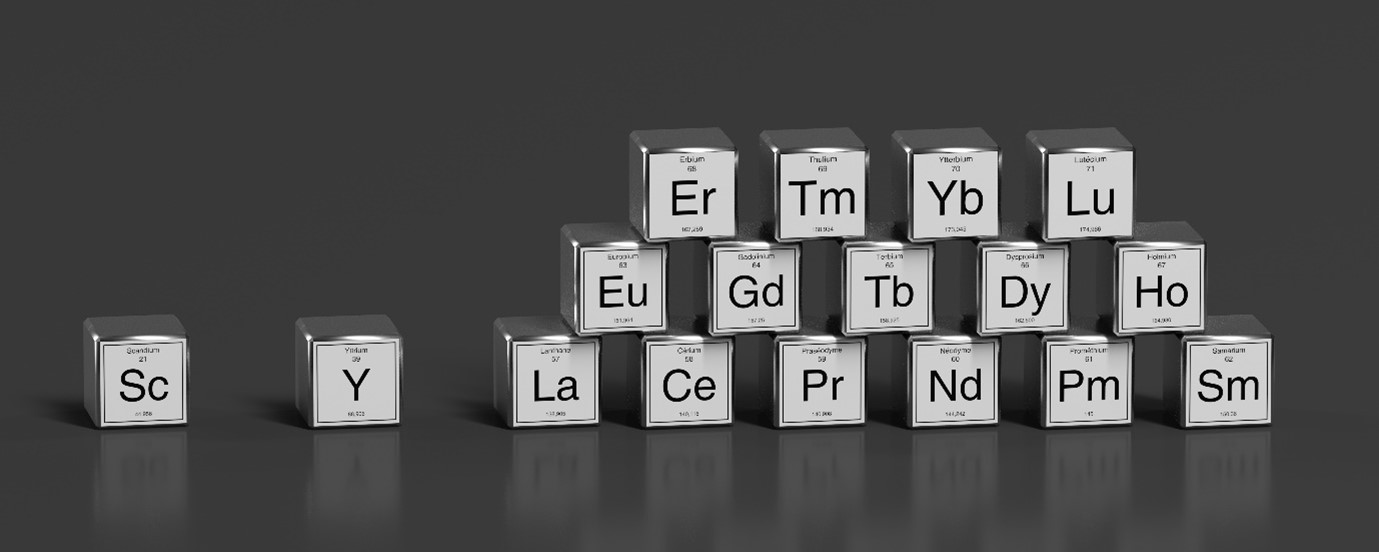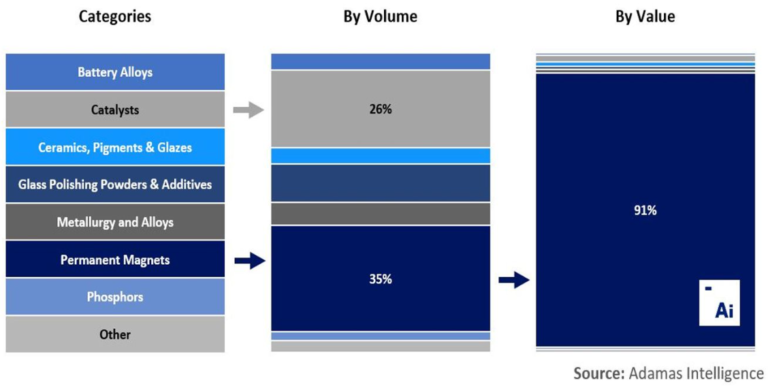About Rare Earths
Rare Earth Elements (REE) are a group of 17 elements on the periodic table that include the lanthanide series plus yttrium and scandium, and are defined as Critical Minerals by Australia, USA, Europe, Japan and India. They are frequently reported as rare earth oxides (REO) as they form stable compounds with oxygen, such as neodymium oxide (Nd2O3). REE are relatively abundant in the Earth’s crust, but mineable concentrations are less common than for most other mineral commodities.

Global mine production was estimated by the United States Geological Survey to have increased to 300,000 tonnes of REO equivalent in 2022. Economic or potentially economic REE deposits have been found in (a) carbonatites, (b) peralkaline igneous systems, (c) magmatic magnetite-hematite bodies, (d) iron oxide-copper-gold (IOCG) deposits, (e) xenotime-monazite accumulations in mafic gneiss, (f) ion-absorption clay deposits, and (g) monazite-xenotime-bearing placer deposits. Carbonatites have been the world’s main source for the light REEs since the 1960s. Ion-adsorption clay deposits in southern China are the world’s primary source of the heavy REEs.
Rapid technological advances have resulted in the REE growing in importance in many domestic, medical, industrial and strategic applications because of their unique catalytic, metallurgical, nuclear, electrical, magnetic and luminescent properties. Many REE have numerous applications while particular applications may use different REE depending on the properties required; e.g. Nd and Pr are used in high-power permanent magnets, whilst addition of smaller quantities of Dy, Sm, Tb and Ho can contribute to high-temperature resistance and increased magnetism (Geoscience Australia).
By volume, permanent magnets and catalysts were collectively responsible for over 60% of global TREO consumption in 2018. However, by value, permanent magnets alone were responsible for over 90% of the total value of global TREO consumption and this share is poised to expand further as demand (and prices) for Nd, Pr, Dy and Tb continue to rise strongly in the years ahead.

Permanent magnets are the key technology contributing to electrification and decarbonisation globally. They are responsible for converting electric energy in electric vehicles to kinetic energy and for converting the kinetic energy of rotating wind turbines into electricity.


